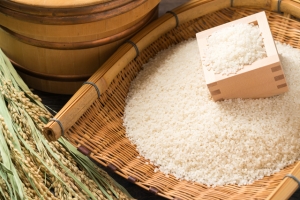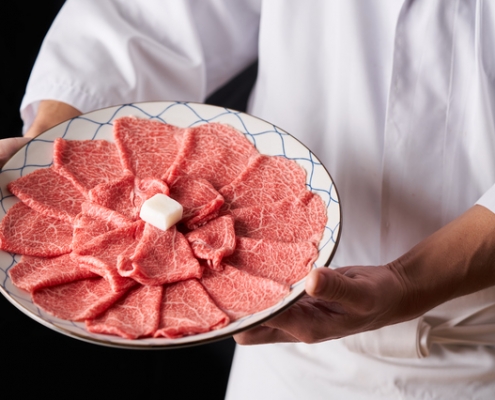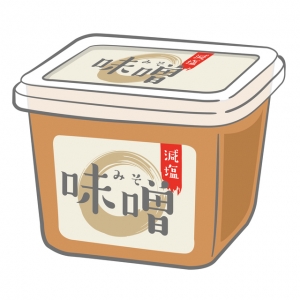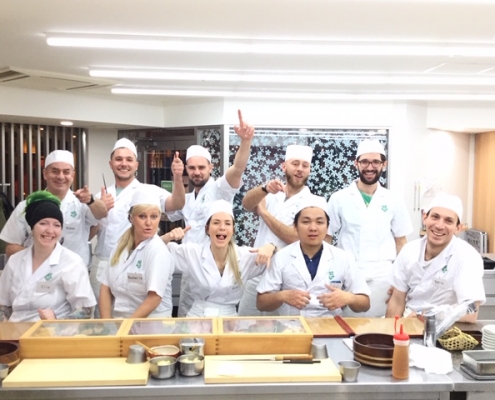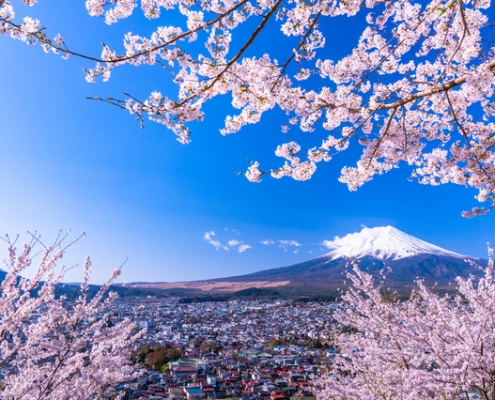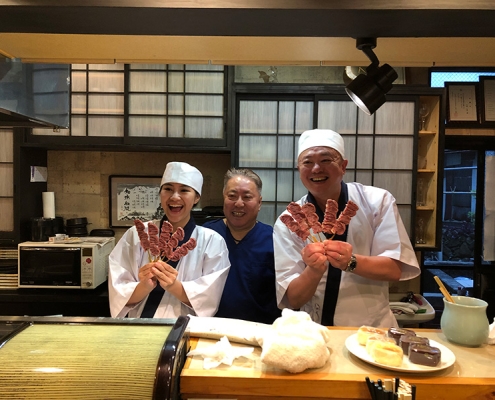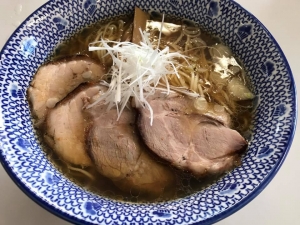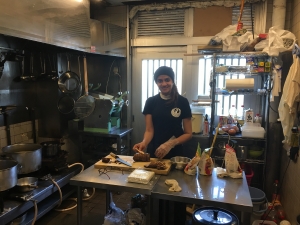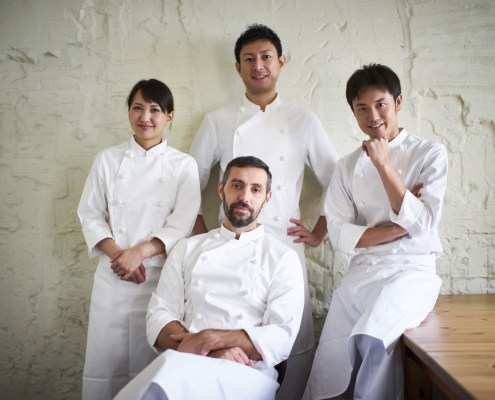Japanese grocery stores and ingredient suppliers in New York
September 7 2023 Updated

Rice
Japanese brand rice from areas all over Japan are always available from Japanese wholesalers, but most restaurants in the US use rice grown in California, only very high-end restaurants would use rice grown in Japan. The rice grown in the US is quite high quality, thanks to selective breeding.
In recent years, to add value, some restaurants in Los Angeles and New York serve Japanese rice cooked in old Kamado style pots. Because of this, more and more people are exposed to the flavors of Japanese rice, and demand for Japanese brands may increase.
Vegetable
To serve authentic Japanese food, it’s important to have Japanese vegetables, and there are now several farms that specialize in the production and sale of Japanese vegetables both on the east and west coasts. These farms produce butterbur, Shiso (perilla), Japanese ginger, green onion sprouts, Kyo-imo (taro), lily bulbs, yuzu, edible chrysanthemum and Kujo-negi (Kujo leeks).
The longest running and best-known farms for Japanese vegetables are Green Paradise Farms in Vista, California, on the west coast, and Suzuki Farms in Delmar, Delaware, on the east coast.
Wagyu Beef
Most of the Wagyu beef found in American restaurants comes from Japanese Wagyu cattle bred and raised in the United States (or Australia). Wagyu is gaining popularity because it has more marbling fat and is richer in flavor than other kinds of beef, recently there’s been an increase not only in steakhouses serving Wagyu but even hamburger restaurants.
In the United States, “Wagyu” can include not only pure-bred cattle from Japan but also pure-bred cattle from the US and / or Wagyu crossed with Angus cattle.
For this reason, many restaurants in the US are attempting to differentiate themselves by importing high quality Wagyu beef straight from Japan.
Soy Sauce
With factories in California and Wisconsin, Kikkoman has an approx. 60% share of the US soy sauce market.
Many kinds of soy sauce are available in the US, including low-sodium soy sauce, organic soy sauce, gluten-free soy sauce, and even soy sauces coming from rural Japan.
Miso
Marukome, which has a factory in Southern California, has approx. 25% share of the miso market. Many kinds of miso are also available in the US, such as low-sodium miso and organic miso.
Seafood
In the 1970s sushi became popular in the US, especially the California roll, but at the time it was difficult to obtain raw fish, since Americans were not in the habit of eating anything raw. Therefore, creative sushi without raw fish that used ingredients like imitation crab, avocado, cucumber etc. became the norm at the time.
Nearly 40 years have passed since then, and thanks to technological innovation and the efforts of many Japanese wholesale companies etc., it is now possible to obtain seafood in the US that is in the same fresh condition as seafood sold in the fish markets of Japan.
Alcohol
The early 2000s had a sake boom, and currently the US is having a second sake boom. Gourmand Americans who are educated about sake have begun ordering sake by the specific prefecture and brewery, and even restaurants that are not Japanese restaurants are offering sake options with their meals. Sparkling sake, Daiginjo-shu sake that can be drunk like wine, and pure Junmai-shu sake with punch are gaining popularity in the US.
They say more than 500 types of sake are already available in the US, and customers who previously drank only hot sake or sake cocktails are now trying different brands and different ways of drinking sake, and can even distinguish the difference between Daiginjo-shu or Junmai-shu etc.
List of Japanese grocery stores and ingredient suppliers
Below is a list of Japanese food importers who wholesale to supermarkets and restaurants, as well as supermarkets that sell Japanese food to the general public.
This list consists of vendors frequently used by Japanese in your country. (Some shops carry not only Japanese cooking supplies but also kitchen ware)
42 1/2 St. Marks Pl. New York 10003 NY and more
https://osakana.nyc/
129 East 47th Street, New York, NY 10017 and more
https://dainobunyc.com/
494 Broome St, New York, NY 10013 and more
https://sunrisemart.com/
59 Great Jones St., New York, NY 10012 and more
https://japanpremiumbeef.com/
324 East 9th Street New York, NY 10003
http://www.sakayanyc.com/
934 3rd Ave, Brooklyn, NY 11232
https://japanvillage.com/
1019 Central Park Avenue, Scarsdale NY 10583
http://trf-ny.com/
595 River Rd, Edgewater, NJ 07020
https://mitsuwa.com/
32-34 Papetti Plaza, Elizabeth, New Jersey 07206 and more
https://www.trueworldfoods.com/
602 Washington Avenue Carlstadt, New Jersey 07072-2902 and more
http://www.wismettacusa.com/
1201 W Edgar Rd, Linden, NJ 07036 and more
https://jfc.com
8100 Cryden Way, District Heights, MD and more
http://youngwontrading.com/
43 Edward Hart Dr, Jersey City, NJ 07305
https://www.yamaseafood.com/
14-50 128th St., College Point, NY 11356
https://daiei-trading.com/
Number of Local Japanese People
38,263 Japanese people live in New York city area, as of 2022.
Number of Local Japanese Restaurants
According to a survey by the Japan External Trade Organization, in 2023, the number of Japanese restaurants in State of New York was 1,936.
In New York city, Japanese cuisine is getting quite high-end, with increasing awareness about authentic Japanese ingredients. New York’s finest restaurants offer cuisine that incorporates Japanese ingredients and cooking methods.
High-quality Japanese beef and flavorings such as yuzu and wasabi are added to authentic French and Italian cuisine to create new dishes. Because Japanese food has a reputation for being healthy, it seems some restaurants are trying to attract customers by offering dishes that include Japanese food.
For American People Wanting to Study Japanese Cuisine in Japan
Do you want to study Japanese cuisine in Japan one day? Chefs Wonderland, an agency for helping foreign visitors study cooking in Japan, can make all your cooking school dreams come true.
There are two main ways to study Japanese cuisine in Japan.
One way is to enroll in a culinary school.
The other is to find work at a Japanese restaurant in Japan, although this is not very easy to do.
How Many American People are Living in Japan?
60,804 American live in Japan in 2022.
Study Japanese Cuisine at a Culinary School
If you want to attend a Culinary Technical College for Japanese people, you need to be able to speak fluent Japanese, but even if you can’t speak Japanese, you can study Japanese cuisine at one of the following schools that offer English courses lasting anywhere from one day to three months.
There are classes for beginners, short-term intensive courses to get a certificate, and private classes for professional chefs.
Culinary Schools in Japan
Tokyo Sushi Academy
The first and the most popular sushi school in the world.
Japan Culinary Institute
Japanese culinary training including sushi, kaiseki, yakitori, wagashi and more.
Miyajima Ramen School
More than 1,000 graduates from over 50 countries.
International Ramen School
Ramen study program combined with OJT
Work in Japan
To work as a chef in Japan, there are three major requirements: the first is a visa to work legally, the second is Japanese language ability, and the third is skill as a chef. When it comes to Japanese language skills, daily conversation is the basic minimum required. this is roughly the equivalent of 300 hours of Japanese study required at least.
if you are a chef with a specialty (i.e. an American chef who works at an American restaurant), 10-years of specialty cooking experience may get your visa approved. In this case, there is no requirement of Japanese language fluency.
To know more about chef visa in Japan
What type of visa is required to work at a restaurant in Japan?


